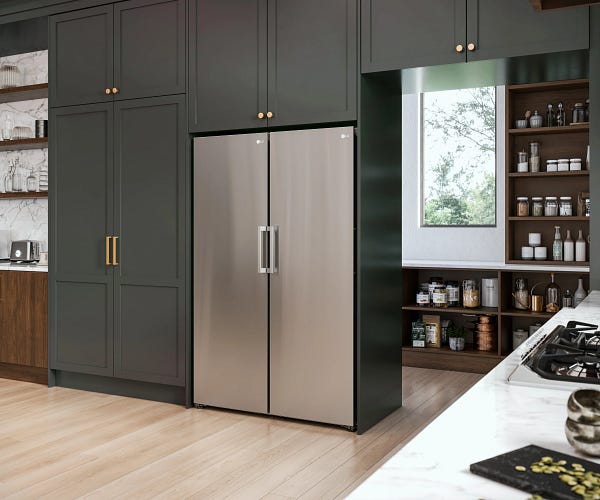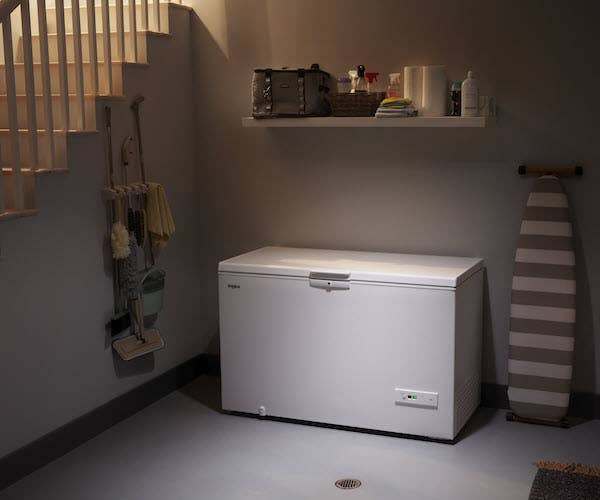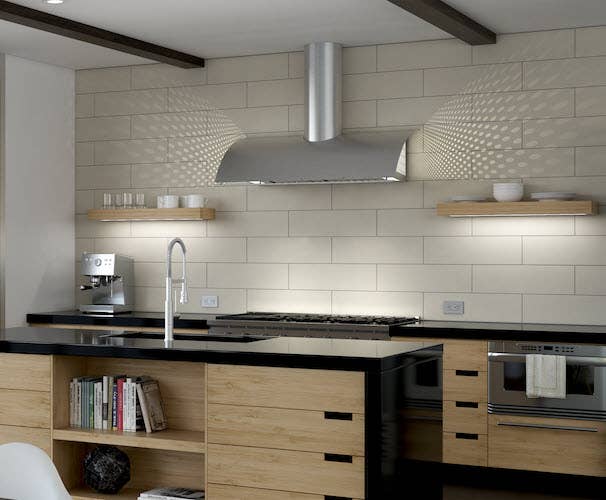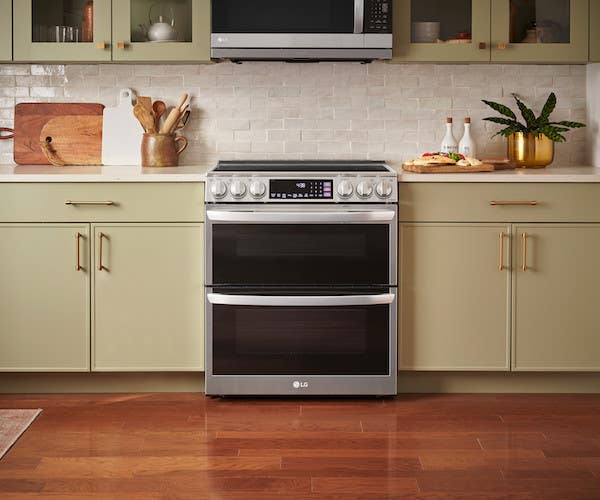

Choose your delivery area
A Guide to Buying KitchenAid Cooktops
This guide from KitchenAid can help you learn about cooktops and to discover which is right for you. It covers everything from style to configuration and more.
A GUIDE TO COOKTOPS: WHAT TO CONSIDER WHEN SHOPPING FOR A COOKTOP
"There are a lot of things to consider when shopping for a cooktop. The variety of features, configurations and fuel types alone make it difficult to select the cooktop that can match your cooking needs. Here's some help to navigate you through the decision-making process of buying a cooktop. This guide will also highlight what is available from the KitchenAid brand."
WHAT IS THE DIFFERENCE BETWEEN A RANGETOP AND COOKTOP?
Cooktops
Cooktops are installed in the countertop with the controls positioned within the cooktop on the horizontal plane. They are fuelled by gas or electricity. And thanks to fewer infrastructural requirements, they can be installed easily into tighter spaces in the kitchen than a rangetop.


Rangetops
Rangetops are typically gas-powered and have professional or commercial style. These units can include details like heavy-duty knobs and grates, and fit above and over the edge of the countertop with vertically positioned controls.


FUEL TYPES - How to Decide?
Each fuel type performs differently, offers a different aesthetic, and has its own specific maintenance requirements.
Gas Cooktops
Gas burners are measured in British Thermal Units (BTUs). It's important to note that higher BTU output results in higher heat. This is vital for cooking techniques like searing (15K + BTUs). Incidentally, a lower BTU output produces lower heat, which can help with challenging tasks like melting butter (5K BTUs).
Professionals often prefer gas cooktops—which is fueled by either natural gas or propane—for its quick heating ability and precise burner control. Gas is best for those searching for the perfect sear, simmer and results from wok cooking. If you don't have access to natural gas where you live, some brands offer conversion kits to allow your cooktop to be fuelled by liquid propane.


Electric Cooktops
Electric cooktop offer three options: radiant, induction and coil.
Radiant, Induction and Coil burners are measured in watts. Higher wattage produces higher heat, which works well for cooking techniques like searing (2K watts). Lower wattage, on the other hand, produces lower heat, ideal for simmering delicate sauces (1K watts).
Some radiant and induction cooktops are designed with bridge elements for Grill and Griddles, with an element size range of 4” – 12” (10.2 cm to 30.5 cm) to fit the majority of pot sizes.
Radiant Cooktops
Radiant cooktops have an elegant design with responsive elements that can reach high temperatures. Their smooth surface makes them easier to clean compared to gas. Certain models also come with burners that expand and contract to match your pot sizes in addition to a protective coating to negate scratching.


Induction Cooktops
Induction cooktops are designed to work differently than their counterparts. They pass an electric current through a coiled copper wire beneath the cooktop. This causes a magnetic current to pass through the cooking vessel, producing heat. Since the heat goes straight to the cooking vessel, instead of taking the longer route of through the cooktop surface and then the vessel, induction cooktops cook faster and more efficiently than radiant and gas cooktops. Like radiant, induction cooktops have a smooth surface so they're easier to clean compared to gas ones. Certain induction cooktop burners offer versatility by having the ability to expand and contract to match most common pot sizes. These cooktops are precise allowing either effective high heat cooking or low, consistent heat for when you want to melt tempermental ingredients like butter or chocolate.
Remember that the cookware you use must be made of a magnetic metal to work on this cooktop. You can test if your pan works on an induction cooktop by holding a magnet close to it. If it is attracted to the surface, your pan will work. Another compatibility test is to put a pan right on the cooktop. If the display flashes or there's a clicking sound, you should avoid using that pan. Please note that if use incompatible pans, inconsistent cooking results could occur.
You will receive the gift of KitchenAid induction cookware* with the purchase of a qualifying KitrchenAid electric induction cooktop.
*Limited time offer. While quantities last. Learn More


Coil Cooktops
Coil cooktops are a popular item because of their affordable prices. Keep in mind, though, that they can be more difficult to clean. Coil cooktops are not available through KitchenAid.


SIZE & CONFIGURATION
Cooktop Size
"Are you looking for a cooktop that can fit perfectly in your kitchen? You should have a number of options.
Typically, cooktops are 30”, 36”, and 48” wide. There are options for smaller spaces as some brands have cooktops that are 15” and 24” wide. Depth is dependent on the model and fuel type but the range is usually between 20” and 28” deep."


Number of Burners and Options
The number of cooktop burners is commonly related to how wide a cooktop is. 15” cooktops can usually only fit 1-2 burners, 24” and 30” cooktops, though, can have either 4 or 5 burners whereas 36” cooktops can have 5 or 6 burners. Then there's 48" wide cooktops that can have up to 8 burners. Some cooktops also feature grill or griddle options to provide more cooking versatility.


Cooktops with Downdraft Ventilation
Another configuration option to consider is downdraft. Downdraft cooktops have a built-in ventilation system within the cabinet below that suctions smoke and odours directly off the cooking surface. You won’t require an additional overhead ventilation hood, so you can enjoy greater flexibility on where to install your cooktop, creating a more spacious kitchen. Downdraft cooktops offer several venting options. You might need extra open space under the counter for installation in addition to a proper external floor or wall ventilation for external venting. We recommend checking the installation instruction guide provided by the manufacturer as it's your best source of information. Consult with your builder or cabinet supplier to determine if the cabinet materials could potentially sustain any type of damage.


STYLE & COLOUR
Style counts. Most come in either black or stainless steel but you can still choose from a variety of cooktop styles to enhance your preferred taste. Induction and electric cooktops have a sleek or more contemporary look while gas cooktops have what many consider to be a more classic feel. Black tops can have the option of being edged in stainless steel. Certain cooktops are available with knobs whereas others with touch control.


INSTALLATION
You can install a cooktop on a countertop right against the wall. If you prefer to be present with your guests while you prepare food, you can install it on an island. You will also have the option of installing certain wall ovens underneath a cooktop. Make sure to give thought to ventilation when choosing the location of your cooktop, and that there is enough room for the required amount of ventilation.
Most cooktops slightly stick out from counters whereas others sit flush with the countertop.
Manufacturers should include templates in their installation guides, so you can cut your countertop to fit your new cooktop. Follow the manufacturer dimension guide and template to a tee.








